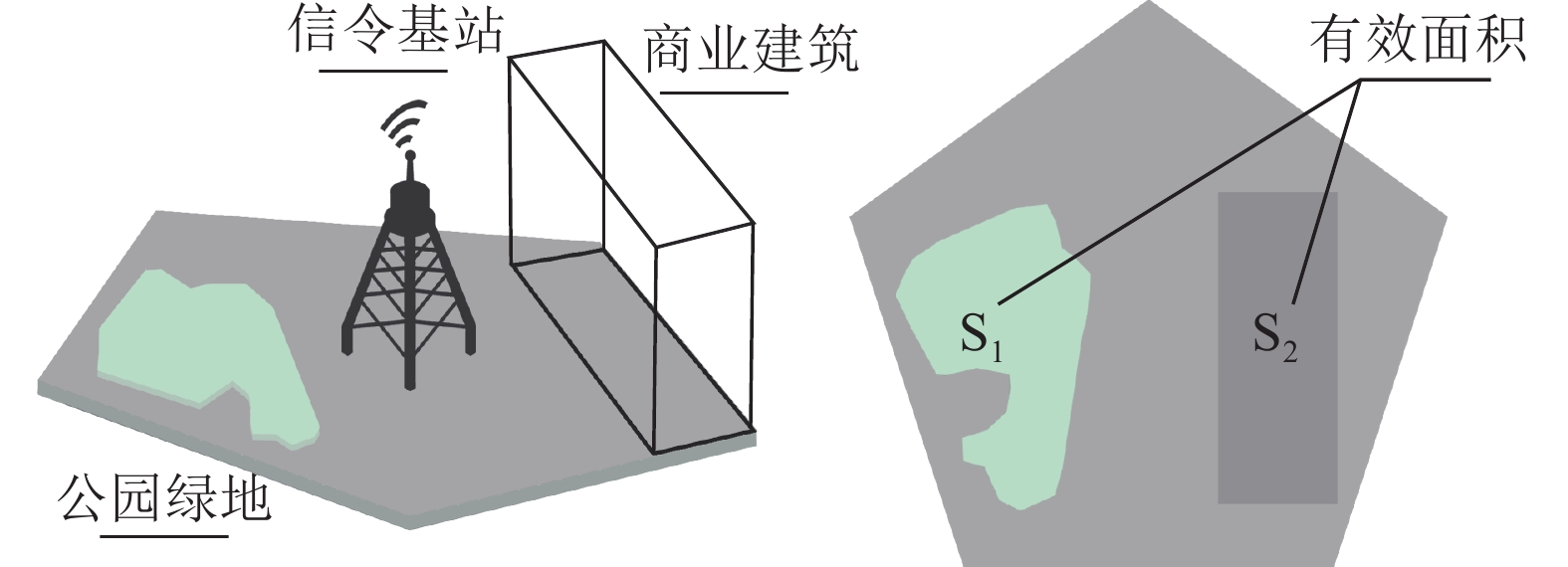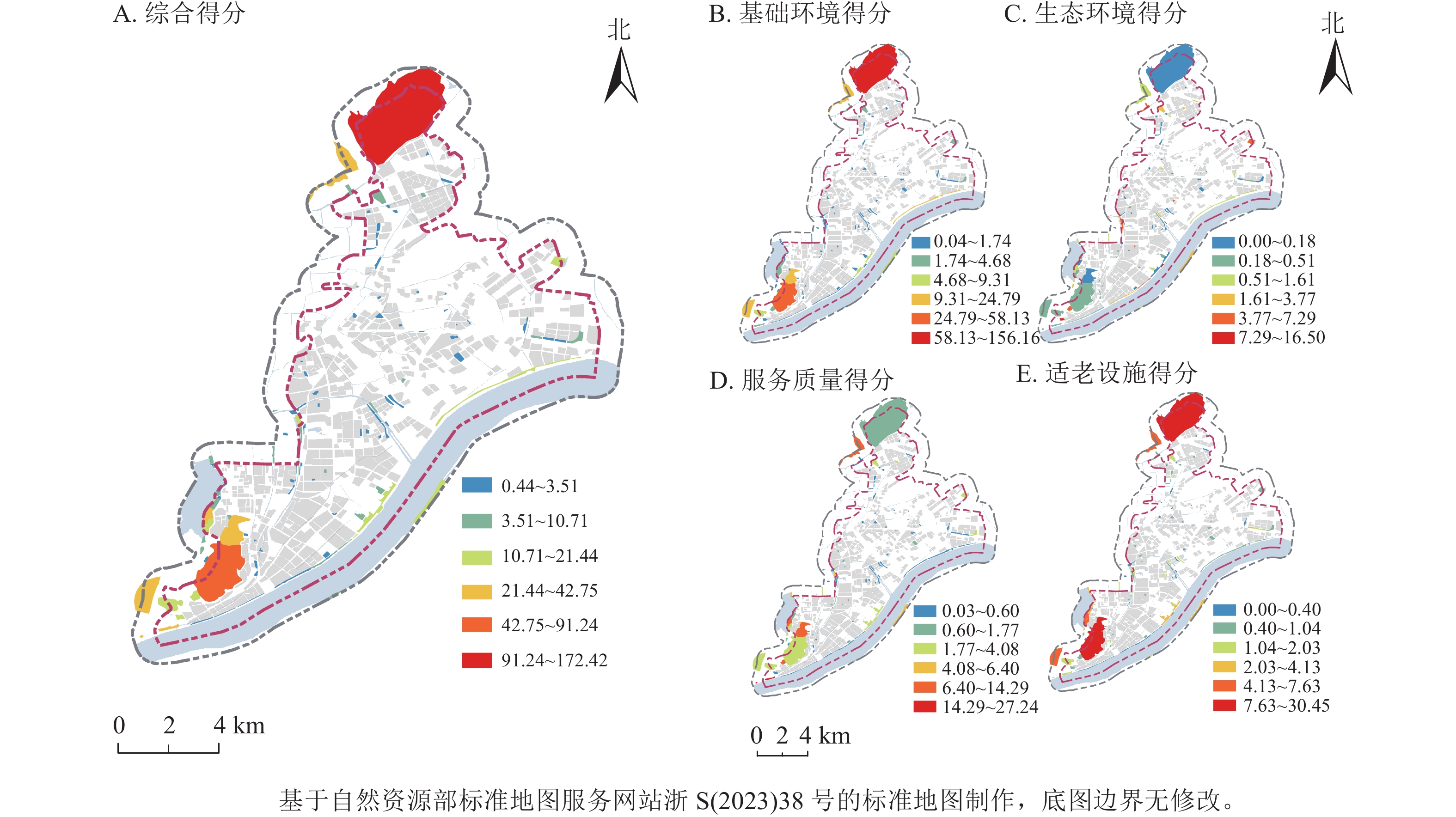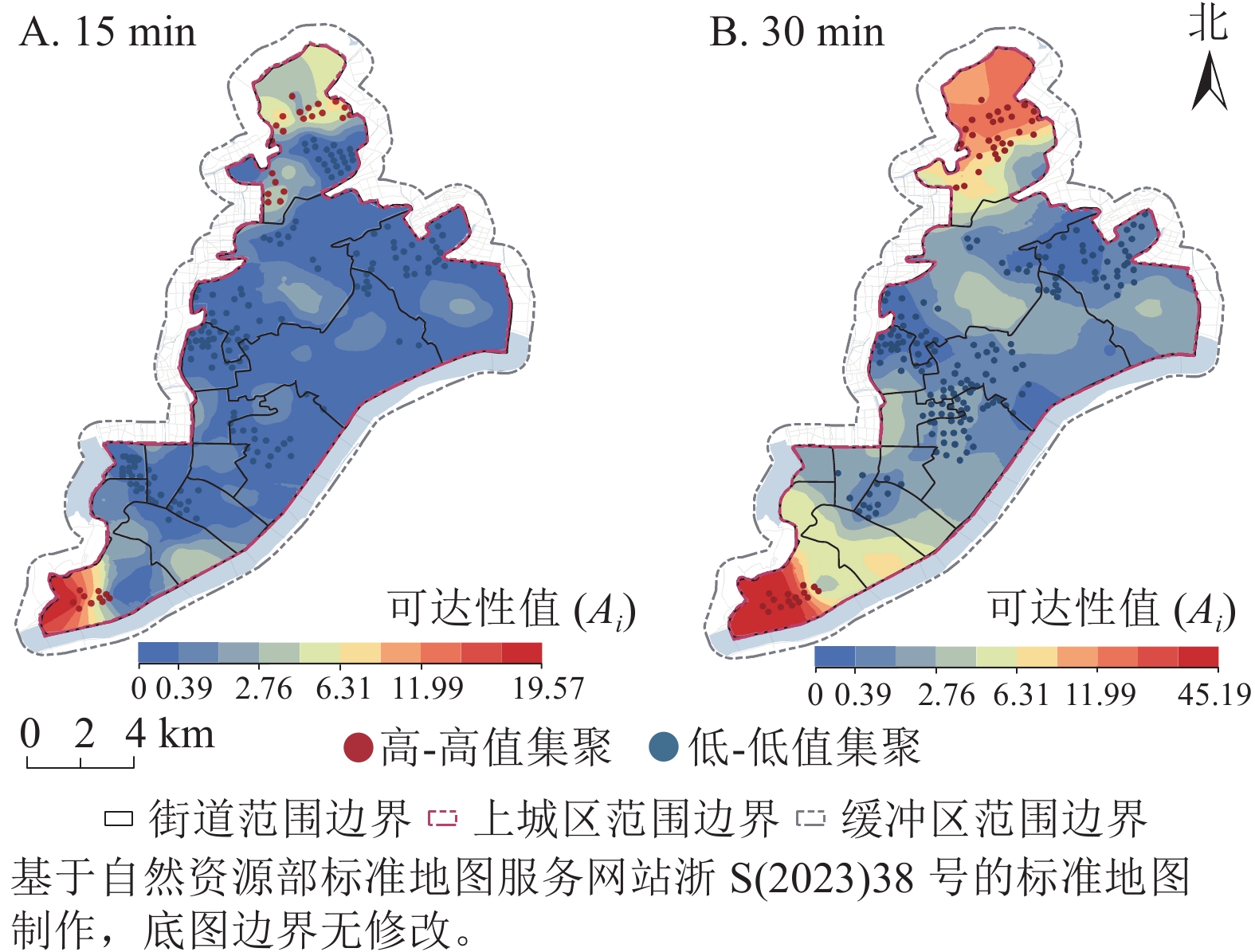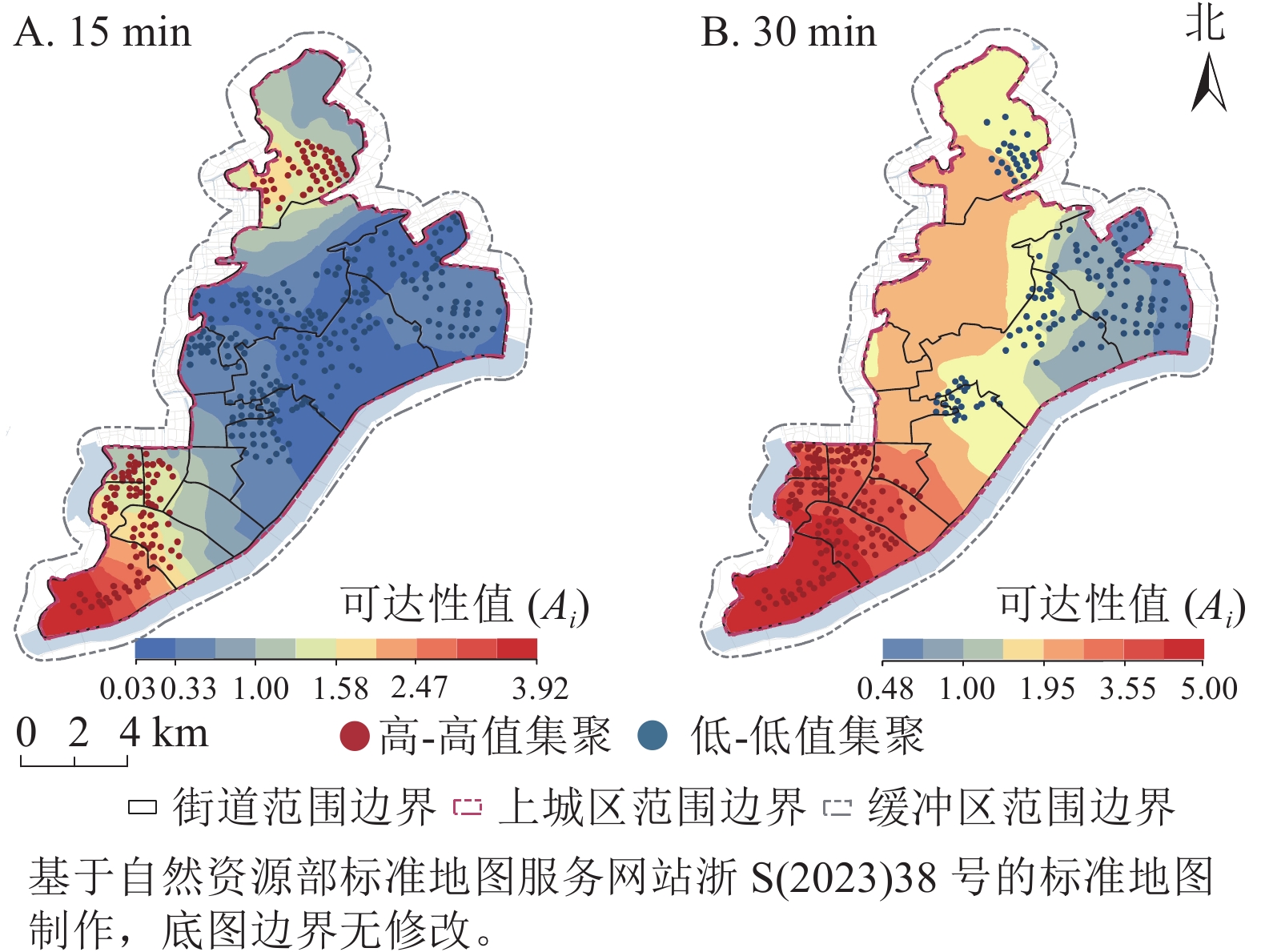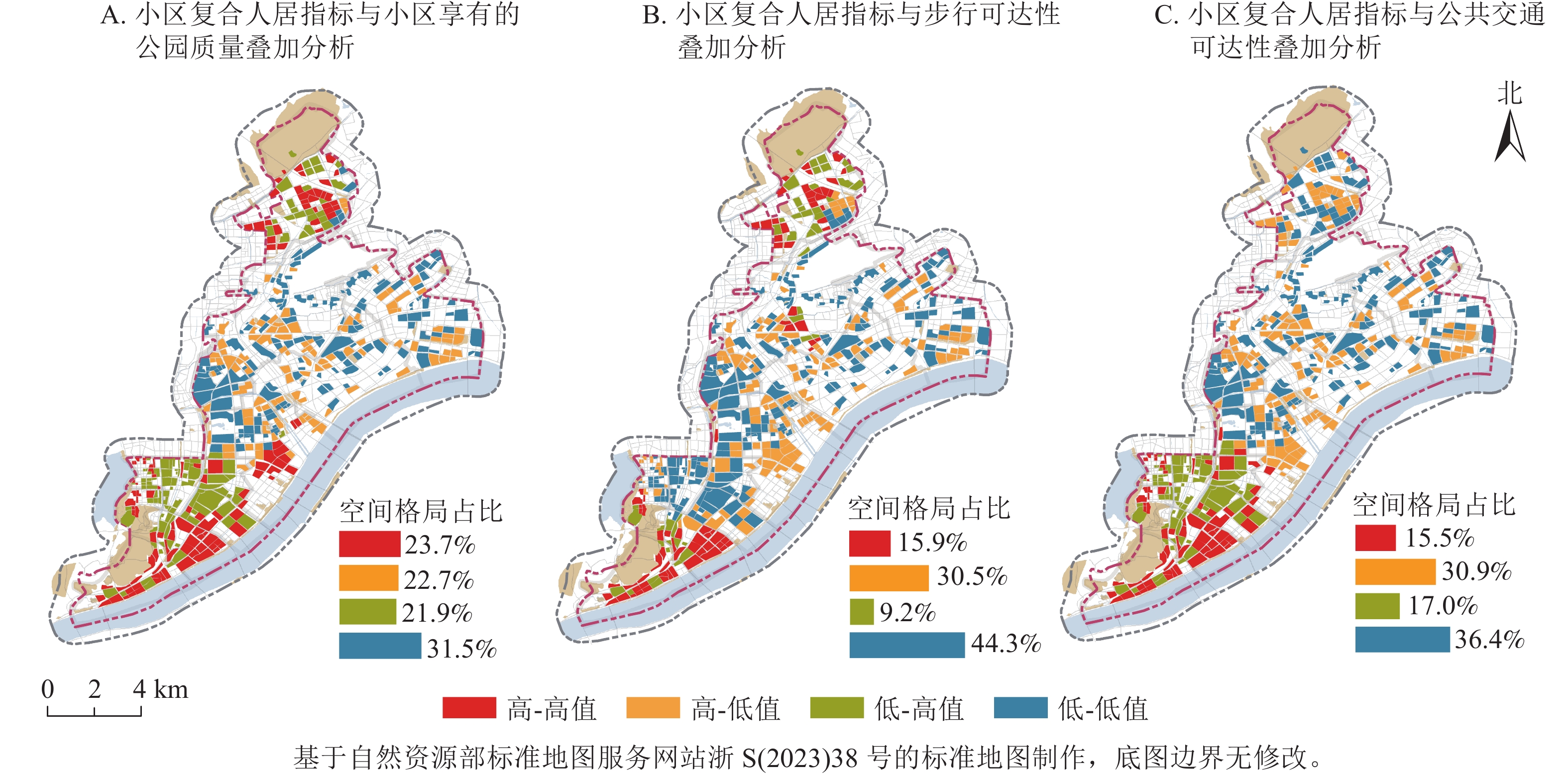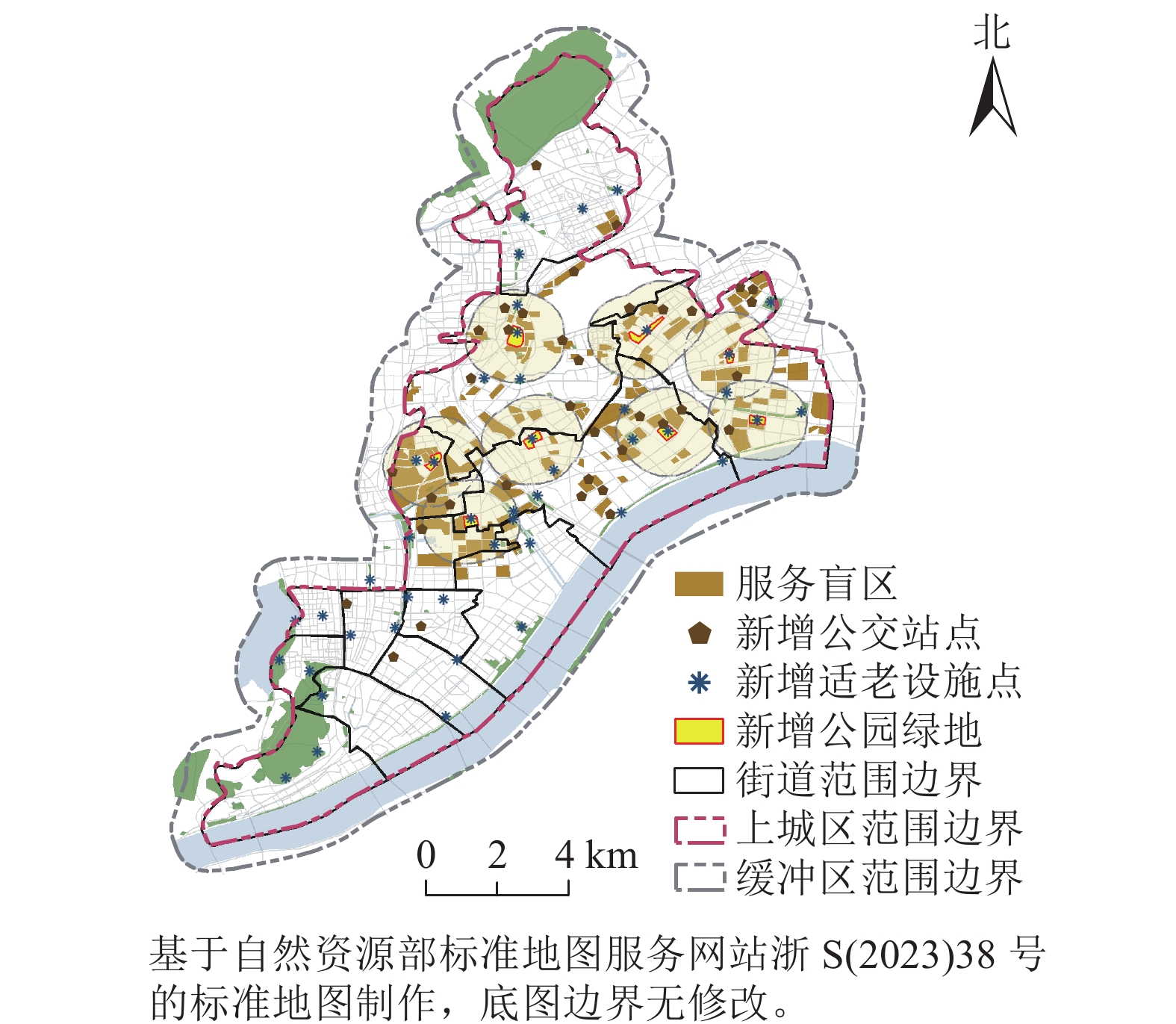-
城市公园绿地作为城市建成环境和居民交往场所的重要组成部分,在提升居民健康福祉等方面发挥了积极作用[1]。公园绿地能否合理、均衡分布直接影响居民获取和享有绿地资源的公平程度。随着社会群体年龄结构和居住条件的变化,不同社会群体对公园绿地的需求产生了差异,特定人群的绿地公平性问题愈发凸显[2−3]。因此,保障各类群体公平享有绿地资源,提升绿地可达性和社会公平性,是充分发挥绿地效益、实现环境正义的重要途径。
环境正义视角下城市公园绿地公平性的研究包括3个方面。一是依托绿地可达性,从单一维度衡量绿地布局公平性。绿地可达性的测度方法是该类研究的关键,主要有缓冲区分析法[4]、最小临近距离法[5]、网络分析法[6]和两步移动搜索法[7]等。两步移动搜索法考虑设施供给能力、居民需求和空间阻抗,分两步计算绿地可达性,因其具有计算简便、数据获取容易等优点而被广泛应用。二是探究具有不同社会地位、经济条件、民族、性别和教育背景的社会群体是否拥有平等获取公园绿地服务的机会,强调居民权力和民主价值,进而评估公园绿地布局公平性[8−9]。三是呼吁公共资源应向弱势群体倾斜[10−11],并从社会经济学的角度探讨弱势群体与公园绿地之间的供需关系[12−13]。由于老龄人口是公园绿地使用频率最高的弱势群体,老龄人口与公园绿地供需匹配问题成为更具现实意义的社会公平性研究方向[14−15]。
当前,公园绿地公平性研究在空间尺度、研究方法和研究内容上仍存在局限性。因数据精度低,大多数研究选取省市级地域作为研究对象[16−17],很少就区级尺度开展研究。研究方法上,虽有学者从距离衰减函数、吸引力模型和阈值设定等方面改进了两步移动搜索法[18−21],但优化方法多局限于单一维度,很少从多维度改进模型的精度,难以精准揭示特定人群的绿地可达性特征。研究内容上,以可达性水平高低来评判空间布局的均衡性[22],较少关注特定人群的需求与绿地供给的耦合程度,不能全面反映公园绿地布局的合理性和社会公平性。本研究以杭州市上城区公园绿地为研究对象,在传统两步移动搜索法的基础上,引入吸引力算法和高斯衰减函数,按照老龄人口需求设置公园质量、居住小区评价体系,提出改进的两步移动搜索法,根据老龄人口出行方式,在步行和公共交通模式下研究城市公园绿地可达性与社会公平性,以期为科学规划建设城市绿地、保障弱势群体环境正义提供有益参考。
-
杭州市上城区行政区面积约122 km2,濒临钱塘江,紧贴西湖,交通网络复杂多样、经济发展水平较高、植被资源丰富,拥有包括综合公园、专类公园、社区公园和游园在内的多种类型的公园绿地。截至2022年底,上城区常住人口为137.1万人,其中老龄人口占26.3%,超出杭州市常住老龄人口9.4个百分点。上城区下辖丁兰街道、笕桥街道、九堡街道、闸弄口街道、彭埠街道、凯旋街道、四季青街道、湖滨街道、小营街道、采荷街道、清波街道、望江街道、紫阳街道和南星街道等14个街道,各街道老旧小区集聚分布[23],老龄人口居住环境质量普遍较低,存在服务设施不足和空间错配问题[24]。
本研究对象涵盖上城区内所有具有生态系统服务功能、满足居民日常户外游憩需求的公园绿地。考虑到行政区边界的居住小区对绿地的选取并不受行政区划影响,将上城区公园绿地的研究区向外扩展800 m作为研究范围。经ArcMap 10.5对2022年高分2号遥感影像进行几何校正、图像融合、人工目视解译后,结合CJJ/T 85—2017《城市绿地分类标准》,将公园绿地按性质分为综合公园、专类公园、社区公园和游园等4类,通过比对《杭州市公园名录(1~3批)》,查询到名录内公园绿地72处,结合实地调研,确定城市社区周边绿地5处,西湖周边绿地7处,沿江沿河绿地15处和800 m缓冲区范围内绿地18处,共计117处公园绿地。为了减少公园绿地周边由于河流、围墙等阻隔导致的计算误差,本研究将各类公园绿地标记出入口(面积>0.5 hm2),得到212处绿地出入口点(图1)。
-
本研究中交通路网数据通过OpenStreetMap获得。依据老龄人口的行为特征设置步行和公共交通2种出行方式,分别提取路网数据。居住小区数据来源于2022年高分2号遥感影像,共提取488个小区斑块。人口数据来源于中国联通智慧足迹的手机信令数据,当用户手机与基站通信连接时,基站会对用户进行定位,记录与用户的交互信息,包括用户ID、交互时间、基站编号、事件类型等,其数据精度远高于街道、区县等统计数据[25]。对基站数据处理时发现,传统的栅格计算模式在微观层面误差较大,故引入泰森多边形算法,因其在空间上有等分特性,可用于解决最近点、最小封闭圆等问题[26]。以多边形网格设置基站单元,提取连续20 d夜间00:00—5:00停留在基站单元内的人口数据,求和并赋值于居住小区斑块,识别年龄字段大于60岁的数据作为居住小区老龄人口数据,与第7次人口普查数据中的街镇常住老龄人口数进行相关性检验,相关性系数r=0.887 5,表明结果可靠。在获取公园绿地的老龄人口实达数据时,同样采用泰森多边形算法解决研究范围内62个绿地无基站覆盖的问题。提取5:00—21:00停留在该基站内超过30 min的老龄人口数据,剔除工作日超过5 d被基站记录的工作标记用户。若该基站范围内同时包括商业建筑,则以商业建筑占地面积占有效面积的比例进行分割处理(图2),得到各公园绿地老龄人口实达数据,与同类型公园绿地老龄人口实达数据总和作比,计算老龄人口面对各类公园绿地的概率选择可能性[27−28],以此衡量公园绿地的吸引力水平。
-
以年龄友好型框架的研究[29]为基础,选取公园绿地中对老龄人口影响较大的基础环境、生态环境、适老设施和服务质量等4个一级指标,以及面积、形状指数、卫生环境、水体覆盖率、植被覆盖率、内部配套设施、景观小品、大众点评评论数和服务功能多样性等9个二级指标构建公园质量评价指标体系(表1)。采用熵值法对每个二级指标设置权重,克服主观赋值法带来的数据随意性缺陷和属性重复问题[30]。将求得的二级指标权重与标准化处理后的指标数值相乘,求和并扩大1 000倍得到公园质量综合得分。
一级指标 二级指标 数据来源 权重 基础环境 面积/m2 通过ArcGIS矢量化后统计所得 0.203 6 形状指数 由公园绿地周长和面积计算所得 0.190 5 卫生环境 基于网络街景图像、大众点评评价、实地调研,对卫生环境进行0~10分的打分 0.011 0 生态环境 水体覆盖率/% 基于2022年高分2号遥感影像解译处理,确定水体面积占公园绿地面积的比值 0.142 4 植被覆盖率/% 基于2022年高分2号遥感影像解译处理,确定植被面积占公园绿地面积的比值 0.017 2 适老设施 内部配套设施 公园绿地内部高德地图兴趣点(point of interest, POI)数据 0.117 1 景观小品/个 实地调研结合遥感影像,提取公园绿地内景观小品数量 0.080 9 服务质量 大众点评评论数/条 爬取公园绿地内大众点评总体评论数量 0.168 9 服务功能多样性 公园绿地外部POI数据 0.068 4 Table 1. Park quality evaluation indicator system
-
利用手机信令、大众点评、POI等多源大数据,组建数据库,作为两步移动搜索法的数据来源,并从供给和需求两方面对算法进行改进。第一步引入吸引力算法,将处理后的手机信令数据作为参数植入算法,用公园质量取代面积作为公园绿地供给能力的衡量因素,克服模型指标单一的局限。第二步引入高斯衰减函数,消除因空间摩擦问题导致的可达性结果误差。首先,对小型公园绿地(面积<0.5 hm2的游园)提取其质心,大型公园绿地(综合公园和专类公园等)提取其入口作为供给点j,分别对各类公园绿地设置相应的服务半径作为距离阈值d0(j),搜索在供给点j距离阈值内的居住小区质心点,汇总搜索范围内的老龄人口数量,与公园绿地供给点j吸引力概率相乘,计算出供需比Rj,即为公园绿地供给点的服务能力。其次,以任一居住小区质心点i为需求点,对步行和公共交通2种交通模式设置15和30 min的时间阈值。设老龄人口的步行速度为4.75 km·h−1,公共交通运行速度为21.6 km·h−1,将时间阈值分别与2种模式的速度相乘,得到距离阈值d0(i),以距离阈值为半径建立搜索域,搜寻在阈值范围内所有的公园绿地j,将这些公园绿地的供需比与经过距离衰减后的高斯函数相乘,最终求和得到居住小区点i的公园绿地可达性值(Ai),其值越大说明居住小区的公园绿地可达性越好。计算公式分别为:
式(1)~(3)中:Sj表示公园绿地j的供给规模,用公园质量综合得分来衡量;dkj表示居住小区点k到公园绿地j的实际距离;Pk是搜索范围内居住小区点k的需求规模,用老龄人口数量来衡量;Qj为老龄人口选择公园绿地j的概率;Rj为居住小区i搜索阈值[dij≤d0(i)]内公园绿地供给点j的供需比;G(dij)为考虑空间摩擦问题的高斯衰减函数。
通过自然间断点法对可达性结果进行克里金插值分析,使用莫兰指数(Moran’ s I)衡量老龄人口可达性的空间集聚差异。
-
社会公平性评价从居住小区人居环境状况和空间公平性两方面入手。小区复合人居指标体系表征居住小区的人居环境状况,指标构建来源于老年宜居社区的内涵,为使老龄人口与居住环境和谐共存,提出老年宜居社区的特征为舒适、优美及和谐[31]。本研究以舒适度、优美度、和谐度为因子,构建小区复合人居指标体系,其中房价信息表征“舒适度”指标,小区绿地率表征“优美度”指标,而老龄人口密度表征“和谐度”指标。其中,“和谐度”指标为负向指标。使用熵值法对统一方向后的指标赋予权重,与标准化处理后的指标数值相乘,求和得到小区复合人居指标值。空间公平性评价由小区享有的公园质量、步行可达性和公共交通可达性3个指标构成,其中小区享有的公园质量为服务范围内居住小区所能享有的所有公园绿地综合质量的累加。
采用Pearson相关性系数表征居住小区复合人居指标与空间公平性指标之间的线性关系。分别将小区复合人居指标与各空间公平性指标叠加分析显示空间关系,共呈现高-高值、高-低值、低-高值和低-低值4种空间格局类别。高-高值表明居住环境质量高且空间公平性强,为高社会公平性;高-低和低-高值是非平衡状态,为中等社会公平性;低-低值说明居住环境质量低且空间公平性弱,为低社会公平性。提取低-低值区域,将叠加分析结果中重叠3次的低-低值区域视为服务盲区。
-
图3A显示:上城区内公园质量综合得分最大值为172.42,最小值为0.44,平均值为8.45。得分高于平均值的公园绿地有25个,仅占21.37%,其中综合公园14个、专类公园9个、社区公园和游园各1个。上城区公园质量总体水平较低,各类公园质量存在差异。空间分布上,高质量公园绿地集中分布在上城区北部和西南部,质量中等及以下的公园绿地散布在中部。综合分析公园质量各评价因子(图3B~E)发现:高质量公园绿地在基础环境和适老设施方面得分较高,而中等质量和低质量公园绿地在服务质量和生态环境方面具有优势。
-
在步行模式下,15 min阈值下老龄人口可达性低值最多,可达性极低值(Ai≤0.39)占65.98%,说明超过半数的居住小区老龄人口很难在日常活动中接触到高质量公园绿地。71个居住小区点可达性值为0,集中在九堡街道、笕桥街道西南部、彭埠街道和望江街道西南部。可达性最高值为19.57,位于南星街道的“白塔人家”小区(图4A)。步行30 min阈值下老龄人口可达性值开始扩散,低值逐渐减少。可达性极低值占10.86%,表明在此阈值下基本可以满足居住小区老龄人口对公园绿地的需求(图4B)。步行模式下,Moran’ s I为0.64,Z为31.87,P为0.000 001,表明上城区老龄人口步行可达性值分布具有显著的空间正相关性和空间集聚现象,其中,高-高值集聚在南星街道和丁桥街道,低-低值集聚在上城区中部。
在公共交通模式下,15 min阈值下老龄人口可达性最高值与最低值相差3.89,水平差异最小。低值少的原因可能是公共交通速度快,使公园绿地服务半径增大,更多居住小区的老龄人口可接触到较高质量绿地,而高值少可能与公园绿地服务的老龄人口骤增有关。可达性极低值(Ai≤0.39)占33.81%,集中在上城区中部(图5A)。公共交通30 min阈值下老龄人口可达性高值增多,呈现出以南星街道和紫阳街道为端点,向上城区东北部辐射的趋势(图5B)。这与上城区西南部交通状况良好、公园绿地类型多样、适老设施完善有一定关系。老龄人口可达性低值集聚在九堡镇,意味着在可供选择的公园绿地增多的情况下,上城区东部绿地吸引力不足。公共交通模式下,Moran’ s I为0.97,Z为46.57,P为0.000 001,说明公共交通模式下,可达性值分布的空间正相关性和空间集聚现象更加明显。与步行模式不同的是,其高-高值集聚在南星街道、紫阳街道、望江街道、清波街道、小营街道、湖滨街道和采荷街道南部,低-低值由上城区中部向东部消退。
-
表2显示:小区复合人居指标与小区享有的公园质量、不同交通模式可达性之间存在正相关,人居环境质量高的居住小区一般享有较高的公园质量和公园绿地可达性。分别对比舒适度、优美度、和谐度3个指标发现,小区享有的公园质量与舒适度、和谐度指标相关性强,说明上城区绿地的规划布局考虑到了人口密度因素,保证了老龄人口的机会公平,但质量高的公园绿地更偏向于服务经济条件好的老龄人口。步行可达性与优美度指标正相关性最显著,表明绿地率高的居住小区拥有健全的步行系统。公共交通可达性与舒适度指标相关性值为0.420,说明房价高的居住小区具有完善的公共交通网络。叠加分析显示:上城区公园绿地存在社会不公平现象,低-低值散布在上城区中部,平均占比为37.4%,而高-高值分布在上城区西南部及北部,平均占比为18.4% (图6A)。比较图6B和图6C发现:步行模式下不公平程度最高,低-低值占44.3%,高于公共交通模式7.9个百分点。
空间公平性指标 舒适度指标 优美度指标 和谐度指标 小区复合人居指标 小区享有的公园质量 0.349** 0.120** 0.305** 0.076 步行可达性 0.049 0.159** −0.035 0.131** 公共交通可达性 0.420** 0.110* 0.371** 0.071 说明:*表示在0.05水平(双侧)上显著相关;**表示在0.01水平(双侧)上显著相关。 Table 2. Pearson correlation coefficient detection results
-
服务盲区主要位于上城区中部,呈片状分布,包括笕桥街道、九堡街道、彭埠街道、闸弄口街道和凯旋街道,共计146个居住小区。以完善15 min生活圈为目的,结合土地利用现状,选择8处最佳新增公园绿地点位;在老龄人口密度高、公园质量低的区域增设适老设施分布点45个;依据公共交通可达性结果,增设公交站点36个(图7)。对比第七次全国人口普查数据发现:湖滨街道和小营街道有超过3%的老龄人口无法被手机信令基站识别,说明存在一部分老龄人口未出门或未携带手机的情况。通过在该区域增加适老设施点和公交站点,完善适老设施,方便老龄人口出行。
-
本研究从数据来源、供给和需求3个方面改进了传统两步移动搜索法的不足,利用手机信令数据识别老龄人口,克服传统数据精度不够、时效性低等局限[32];采用泰森多边形法处理手机信令数据,减小因基站设置原因导致的数据分布不均问题;根据公园绿地类型与交通模式的不同设置相应的距离阈值,提高两步移动搜索法与本研究的适配度[33];引入公园质量评价结果、吸引力算法和高斯衰减函数,降低老龄人口对公园绿地的主观选择差异和距离摩擦系数的影响。本研究也存在一定的局限性。手机信令数据仅能获取到被基站识别的部分,虽然通过使用月均数据有效降低了误差,但是仍存在一定数量的老龄人口无法被识别,此外,本研究使用的小区复合人居指标有待细化,将来可考虑基于老龄人口的生理心理特征,将社区安全度、服务度和便捷度等纳入指标体系[28, 34]。
-
上城区公园绿地老龄人口可达性整体水平较低,可达性值差异显著。主要是绿地分布不均、公园质量参差不齐、绿地供给与老龄人口需求不匹配造成的。这与杨伟康等[35]、徐慧锋等[36]研究结果一致。南星街道和丁桥街道内的公园绿地有良好的基础环境和完善的配套设施,老龄人口可达性较高,尤其是南星街道的“白塔人家”小区,15 min步行方式下可去往4个高质量、高吸引力公园绿地。上城区中部地区,如闸弄口街道,老旧社区密集、公园绿地数量较少,导致老龄人口可达性较低。比较发现不同交通方式会影响老龄人口可达性结果。改善交通路网布局,可以很大程度扩大老龄人口的公园绿地选择范围。可通过优化公园质量、完善交通路网提高老龄人口可达性。对公园质量综合得分低于平均值的公园绿地,应重点提升绿地服务能力、加强适老设施规划。同时,应完善步行15 min生活圈,增加支路上的公交站点,以提高老龄人口出行效率。
-
本研究发现:上城区公园绿地规划布局时,一定程度上保证了老龄人口的机会公平,但也存在146个居住小区人居环境质量较低,老龄人口日常活动难以接触高质量公园绿地的问题。本研究认为:为提高老龄人口社会公平性,应增加公园绿地数量,优化居住区人居环境。一方面在服务盲区内增加绿地,新增绿地以社区公园和游园为主,有效完善公园绿地布局体系。另一方面,重点优化居住区人居环境,丰富景观要素,加强设施维护管理,建立公众参与机制,满足老龄人口对优美居住环境的需求。
-
本研究以杭州市上城区公园绿地为研究对象,从数据获取、供给、需求3个方面改进两步移动搜索法,计算老龄人口的可达性,利用Pearson相关性系数分析社会公平性差异及其成因。研究表明:①上城区公园绿地分布不均,公园质量存在差异;②公共交通模式的可达性程度与集聚程度均高于步行模式的,随着时间阈值的增大,2种交通模式可达性均呈现高值扩散、低值消退的趋势;③上城区公园绿地存在社会不公平现象,步行模式下不公平程度最高,小区复合人居指标与公平性指标叠加分析显示不公平区域集中在上城区中部,目前公园绿地难以满足老龄人口的需求。将来,在城市绿地规划建设时应提升现有公园绿地服务质量,完善交通网络,适度增加绿地数量,改善小区居住环境。
Accessibility and social equity of urban parks
doi: 10.11833/j.issn.2095-0756.20230580
- Received Date: 2023-11-30
- Accepted Date: 2024-04-24
- Rev Recd Date: 2024-03-03
- Available Online: 2024-07-12
- Publish Date: 2024-07-12
-
Key words:
- park green space /
- accessibility /
- social equity /
- elderly population /
- improved two-step mobile search method /
- Shangcheng District of Hangzhou City
Abstract:
| Citation: | LI Jiaxin, CHEN Bing, ZHANG Yinke, et al. Accessibility and social equity of urban parks[J]. Journal of Zhejiang A&F University, 2024, 41(4): 820-829. DOI: 10.11833/j.issn.2095-0756.20230580 |




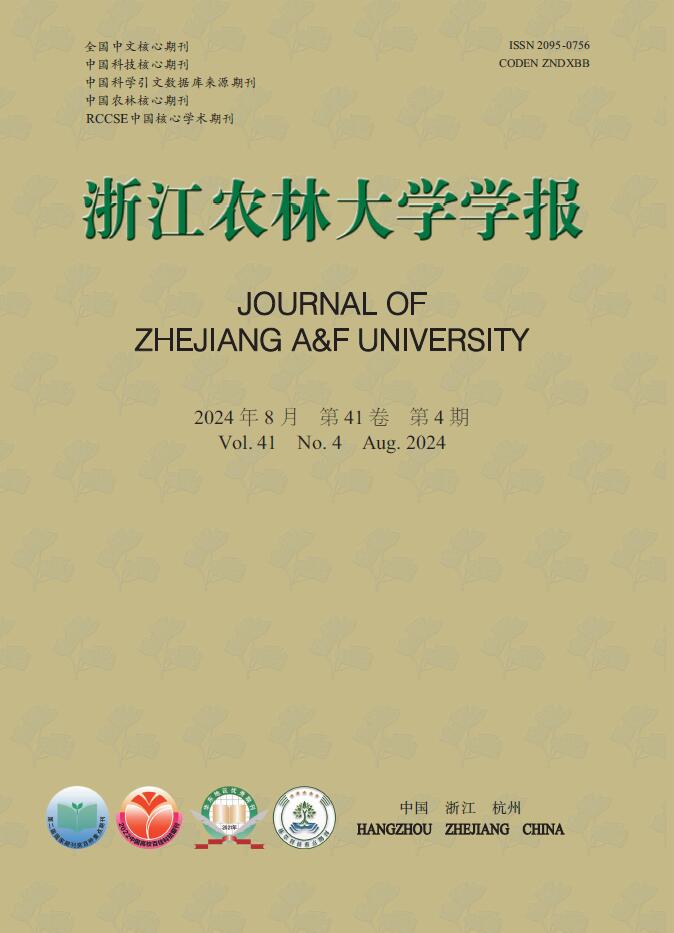


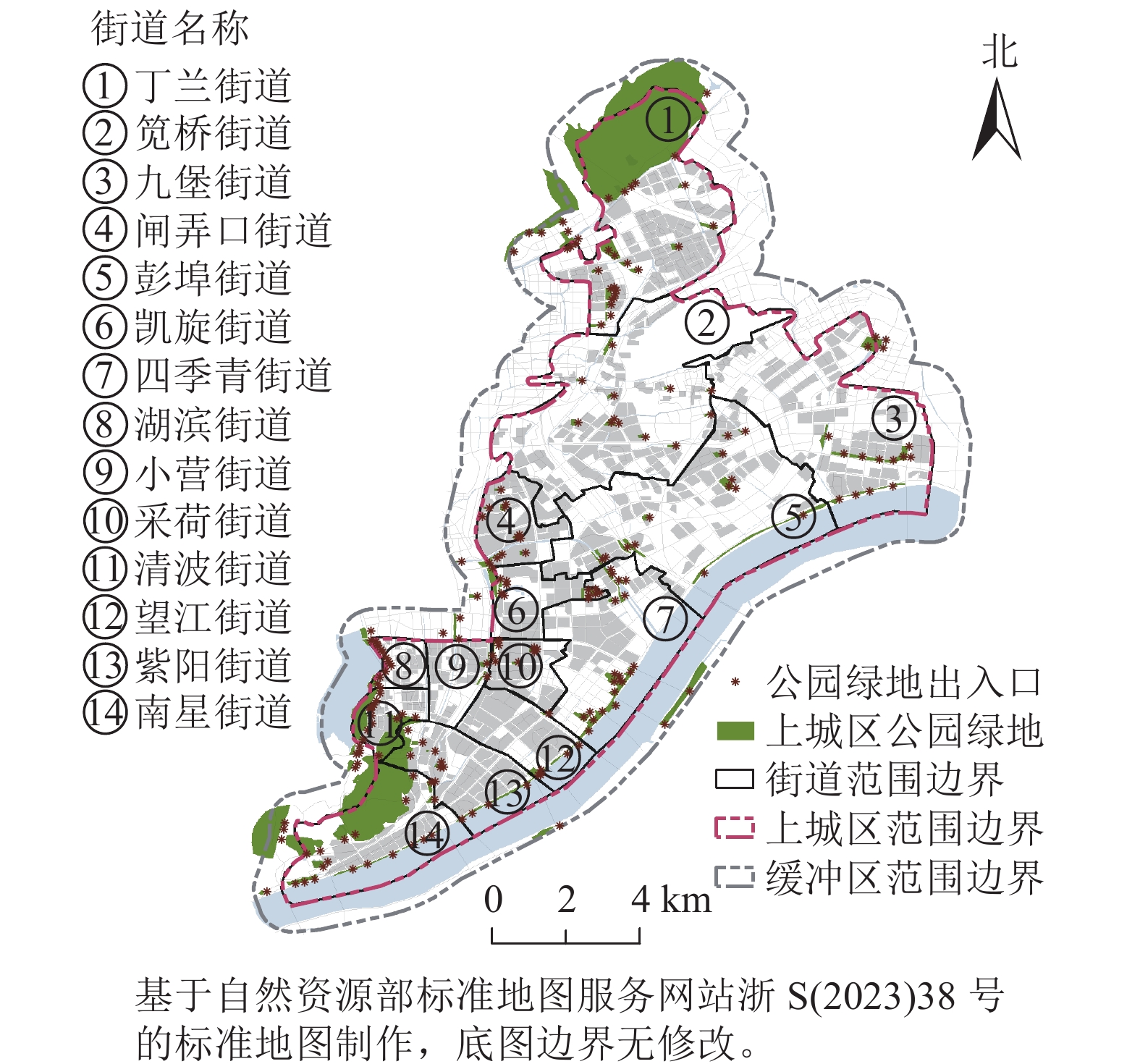


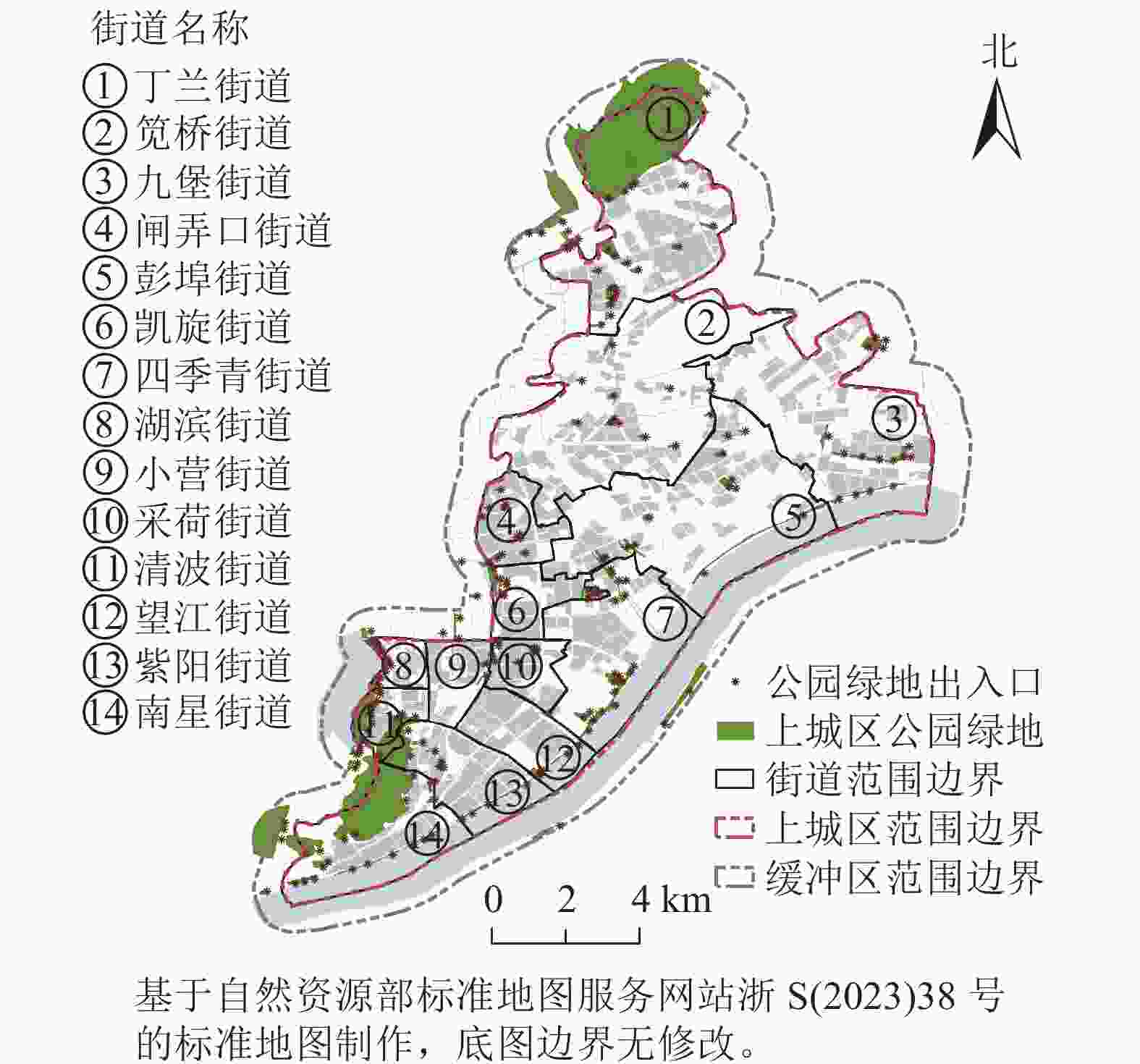
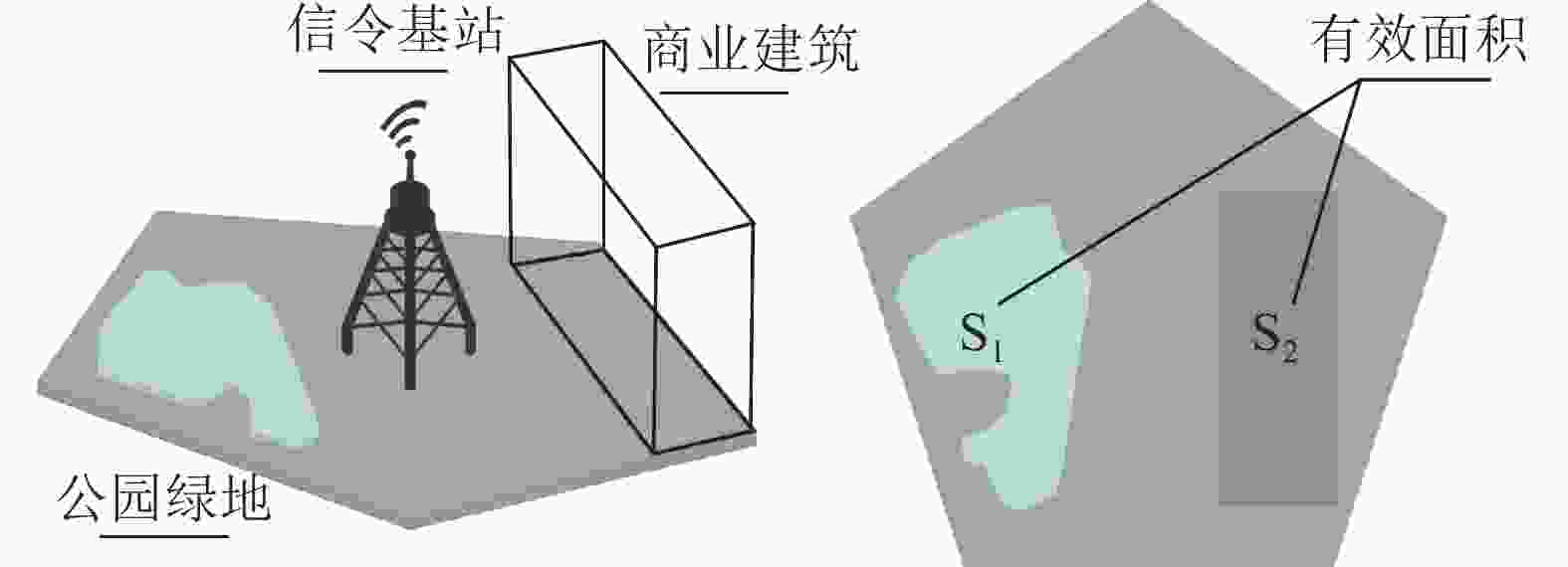

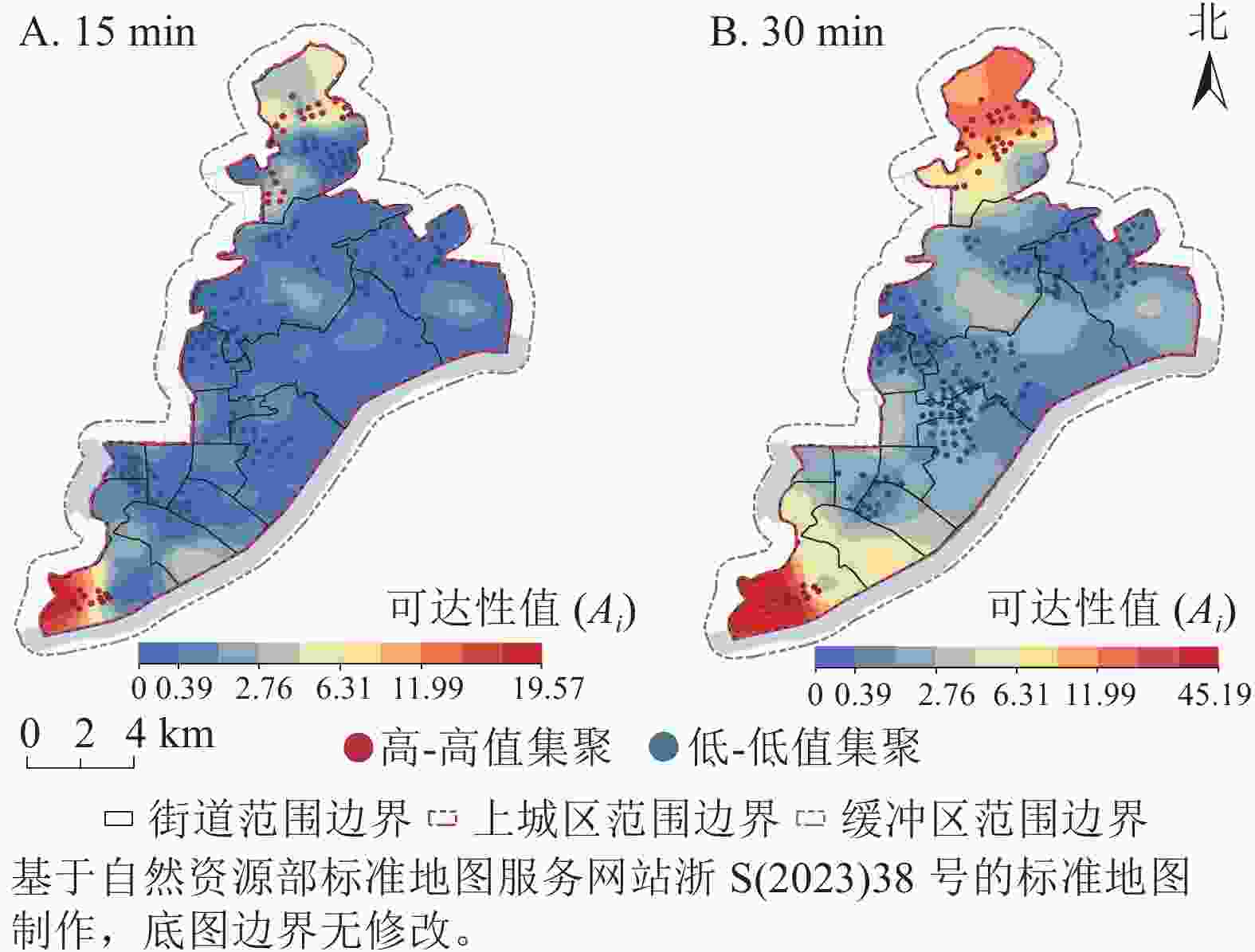
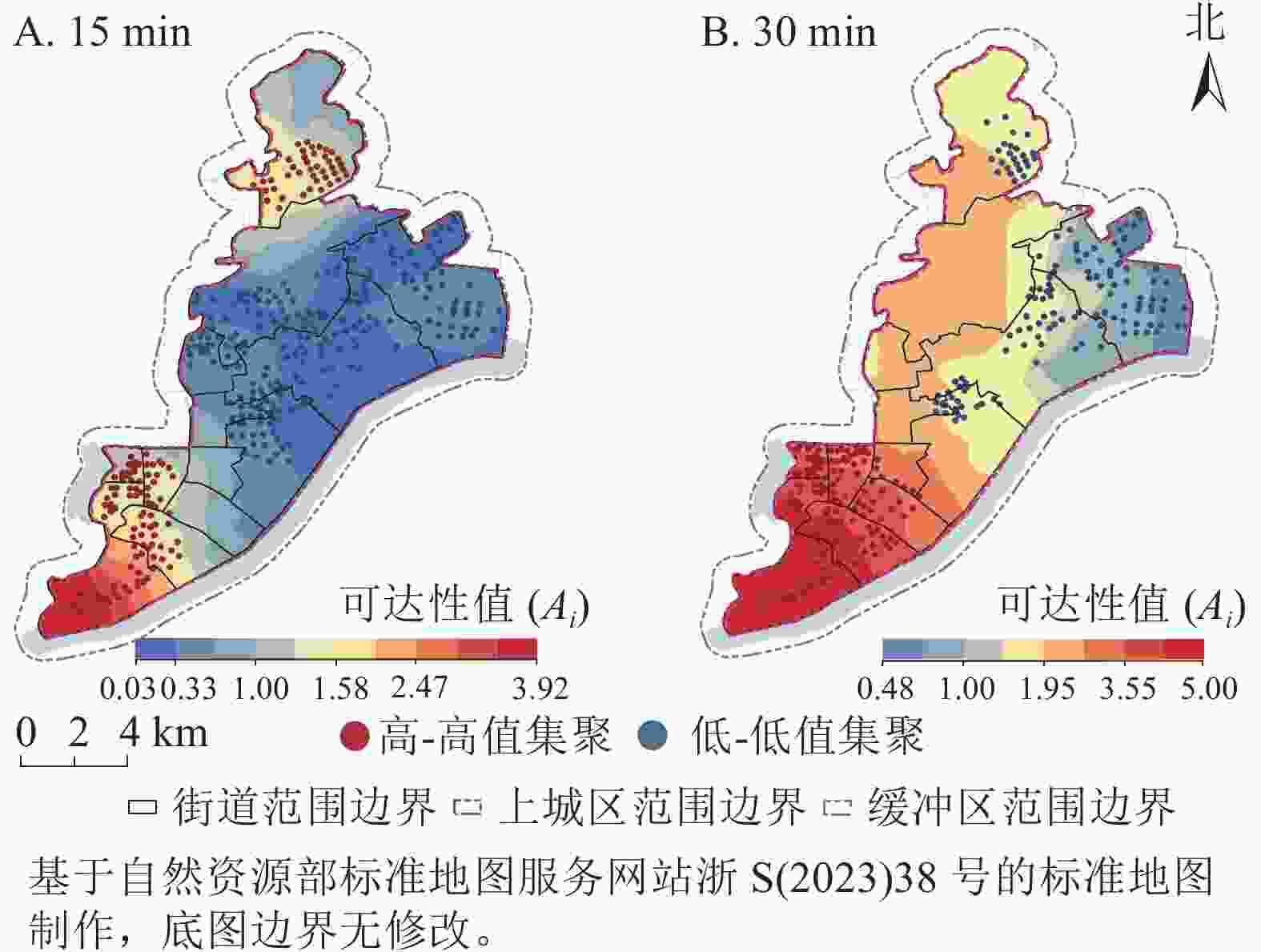
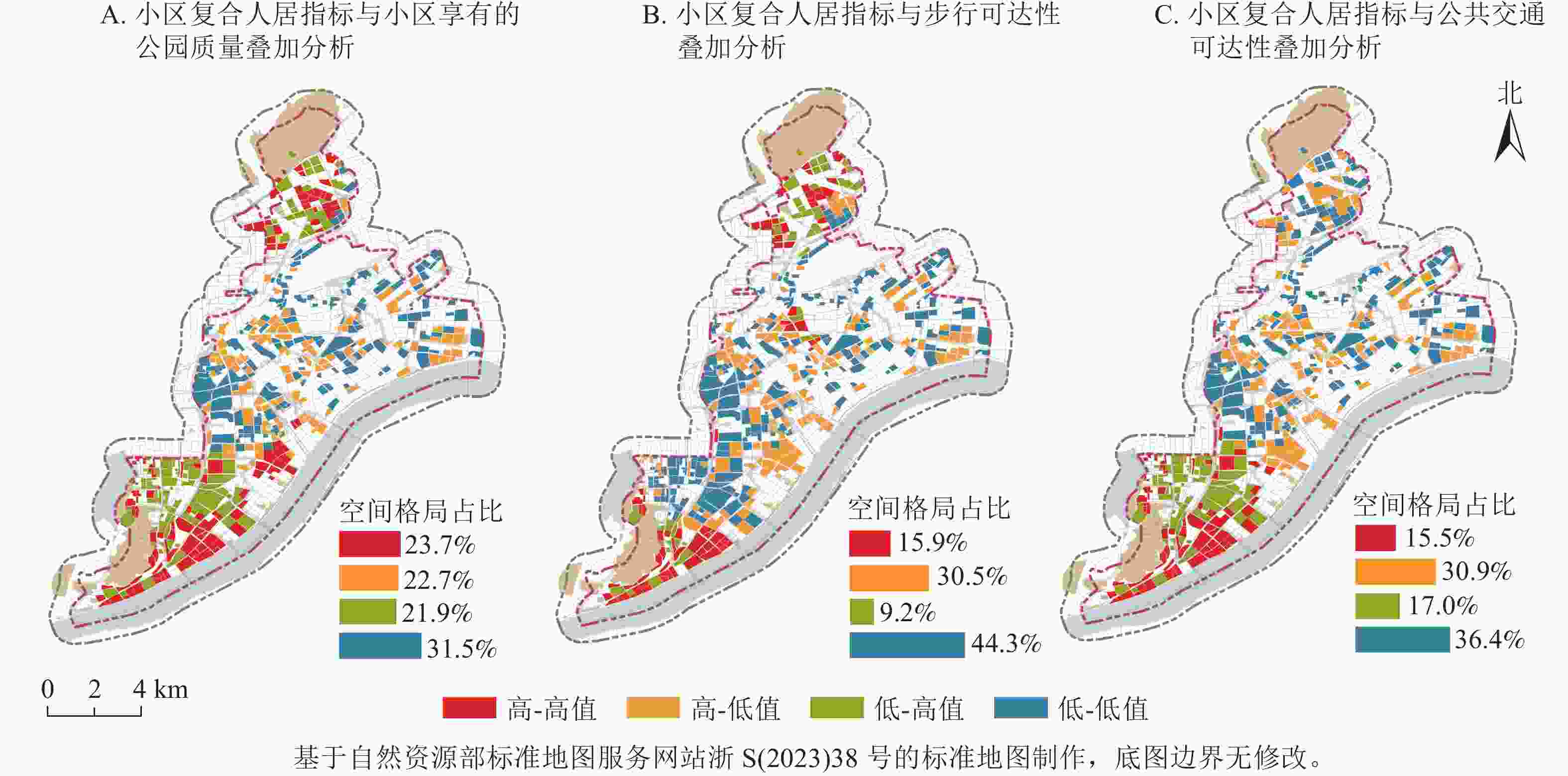
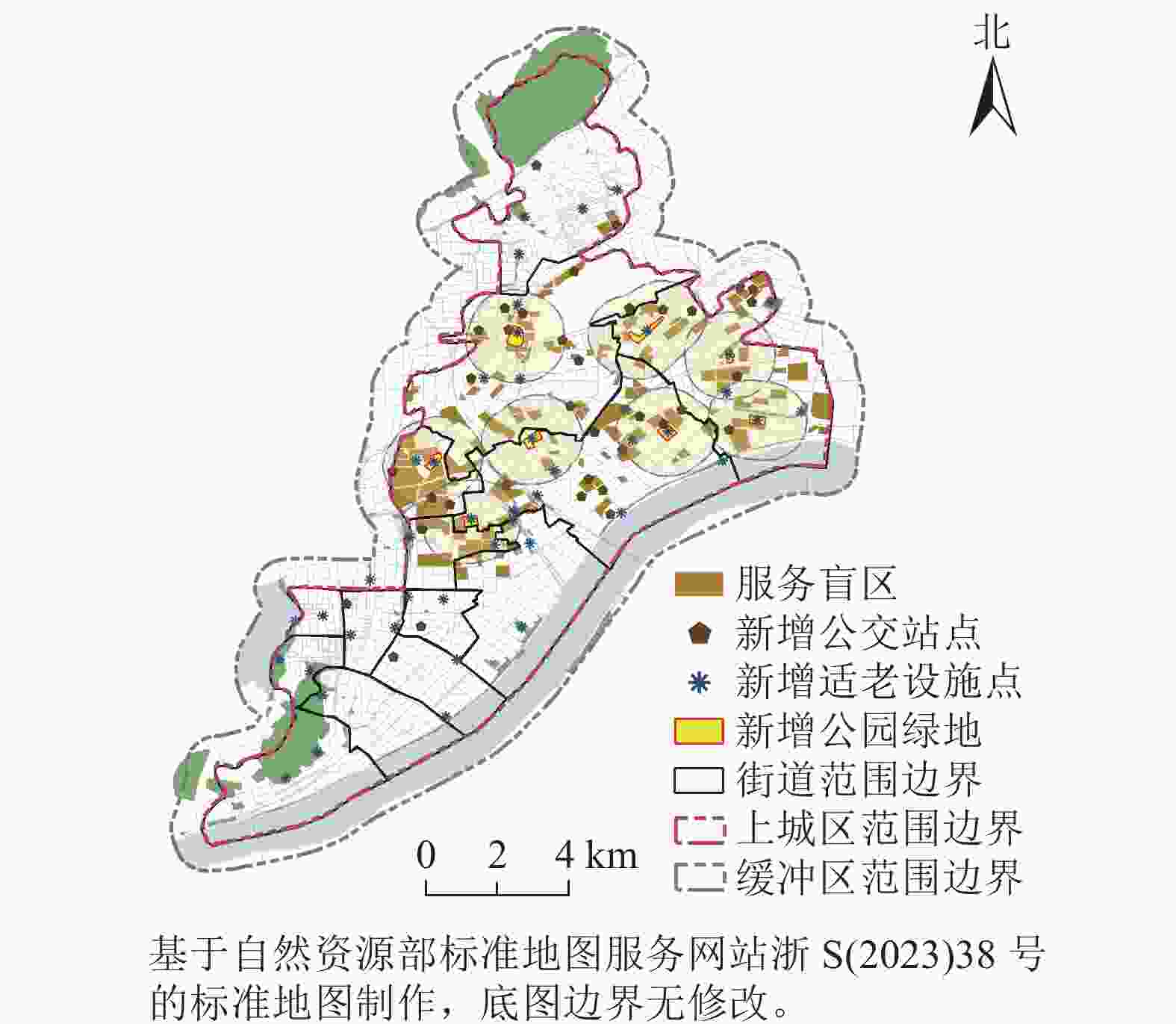
 DownLoad:
DownLoad:
